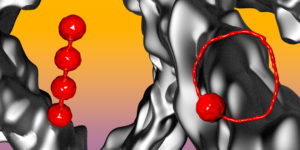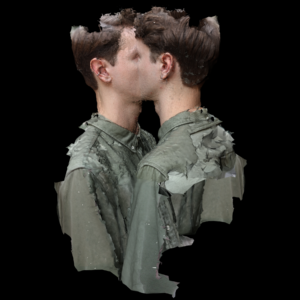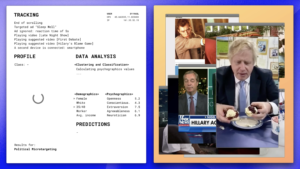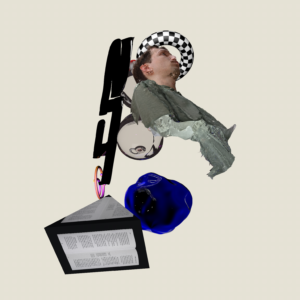MAGAZINE
The transformation of the I/ I without body (part II)
The transformation of the I/I without body (part II)
The previous article of the series The transformation of the I / I without body interrogated our presence in the digital space and more specifically the way we experience in these immaterial realms. By reflecting on these matters we are only reminded of the inescapable fact that we live in our bodies. Maybe we had begun to forget this in a world that links us in so many virtual, intangible ways. We separate the I, the consciousness, the experience and the knowledge from our physical form because it can exist, travel and be active in an almost autonomous way. Still, we can only activate those processes solely through our presence in front of the screen or any other technological device that allows such ways of acting. Then we are confronted with a simulation of the presence, not a simulation of reality but of a subjectivity that experiences it. Our actions are a reaction to the stimuli in the immediate surroundings, images on the screen and sound coming out of the headphones or speakers. However, our “I” operates in a space different from the one in which our “I” experiences. Experience is tightly linked to perception and that only occurs in the body even when the “I” activates in a place far from it – the digital space.
Generally by analysing the human being the question of dividing our identity and consciousness from the body appears to be quite problematic. We seem to forget that the “I”, which corresponds to our identity in this case, only exists as a result of the body’s functioning.
We decided to directly discuss these matters with the artist of wendy.network to get firsthand, genuine insight.
Through the perspective of Sara Levarato
Sara Levarato is a designer/artist living in Italy. She conveys, mediates and also hides meanings, through the generation of visual narratives. Her work collects different perspectives on technology-based subjects and transports the arisen complexities into polysemic visual elements. Sometimes she is led by a more spontaneous and intuitive process driven by sensations that occur in her body and are explored through digital visualisation tools (3D software).
Sara is fascinated by how the tools used have such a big influence on the outcome and how technology is imposing with its interface and functioning.
Sara: In the physical world, we are aware of the mediation we encounter because our bodies react visibly. Often in the digital space, that reaction does not happen and mediation happens without us noticing. The reason is that we as a society believe that technology is neutral and mostly has a positive impact but technological advancement does not necessarily have to be seen solely as positive or negative. Because of the algorithm’s system opacity, it is not clear how things are working. Our digital selves are transformed through algorithms, our identity is categorised and classified and more often than not we are not aware of the parameters used or their working.
Similar to the socio-cultural structures the technological tools tend to make the world synthetic, usable.
Sara: The tools we use (ex. computer interface) have to be functional and easy to understand. That is why we see a big reduction taking place in terms of transparency. While socio-cultural structures are created through a more democratic development, by people using, influencing and transforming them over time (ex. language), technology’s interface is somehow given to us in a more static form by outside companies and corporations. In that sense, we are not slaves of technology yet but we are slaves of the system as data.
We should collectively ask ourselves, how the digital space is and should be regulated. Pro-consumer associations exist and are starting to do some important work but the space is mostly “self-regulated” by big corporations and that is inevitably connected to money.
Nowadays it is not really a choice to enter the digital space, unless you are in a remote isolated place, you are always online. For example, surveillance systems are connected to the internet and we are not in control of what goes online, you can be part of a data set without even knowing.
The question is, how much of that data is actually me? It is not really me but some data that represents me, which has most of the time being stolen from my persona and that will be used for different purposes without letting me have control over it. Even if one can see it as a separate digital self, it affects every aspect of our life, it is not just about ads it is much deeper, complex and identity changing.
Returning to the question of the arts in the digital space the artist says that the medium has intrinsic characteristics and is shaping the artwork, it is not just a tool and the concept is transported in the medium as well. Sara’s works are connected to liminality and liminal spaces, in between different possibilities of becoming.
Sara: Digital 3d models have this uncanny valley quality, and the medium is already doing part of the work participating to build the concept I want to express.
We are all migrating online, we are less physical and more digital. It is easier to show a work in the digital world because potentially it is going to reach more people, and it is cheaper than exhibiting it in the physical space. Many artists also free themselves of the limits associated with the medium by experimenting with it. Artists have always challenged the concept of functionality even in the offline world, but I guess that with the advent of virtual representation this process is going even further and is changing our relationship with the representation of things (simulacra) and the things themselves.
This is indeed a complex matter and Sara says “it sometimes is more comprehensible through a theoretical lens.”





